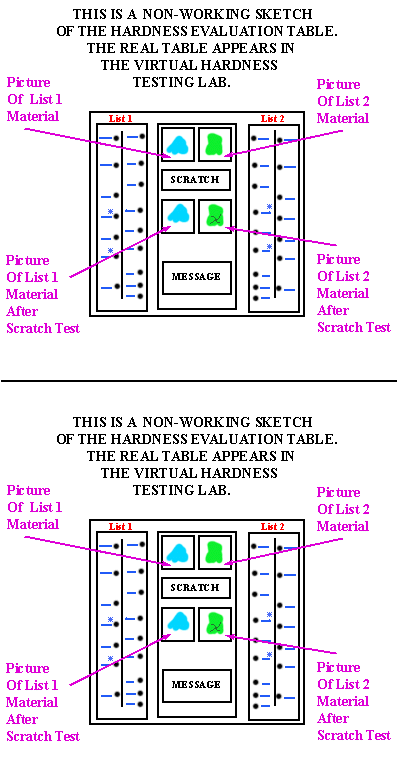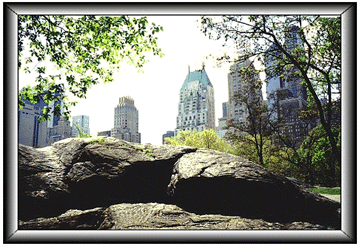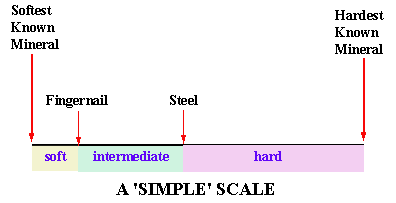- Print out the 'NYC Minerals Record of Hardness' form (printout # Q-2).
 | Go to the NYC Minerals Record of Hardness Form |
- After you have read these instructions, you will go to the Virtual Hardness Testing Lab. There you will see the Hardness Evaluation Table. A picture (not the real thing) of the Table is shown on the right.
- HOW THE TABLE WORKS: The Table is designed to allow you to determine the relative hardnesses of various objects. The Table has two identical lists of materials (mineral specimens and testing tools): one list on the left (List 1) and one on the right (List 2). In the center it has boxes in which pictures of the materials being tested will appear. It also has a message box in which instructions and helpful information are provided.
- Examine List 1. It includes the names of the NYC minerals. Ignore the minerals referred to by number.
- For each NYC mineral in list 1, click on the button next to it. A picture of the mineral will appear in the top left center box.
- Next, click a button next to one of the two testing tools (fingernail or steel) listed at the bottom of List 2. This will cause a picture of the testing tool to appear in the top right center box.
- Now, press the "SCRATCH" button. Pictures of the same two materials will appear in the lower two boxes. The softer of the two materials will have a scratch on it. A message affirming what happened will appear in the message box.
- In this fashion, test albite, amphibole, biotite, calcite, kaolin (clay), garnet, labradorite, magnetite, muscovite, olivine, orthoclase, pyroxene and quartz. These minerals are the most common components of NYC rocks. For each mineral, see if it is harder or softer than fingernail or steel.
- Classify each mineral specimen as 'hard', 'soft' or 'intermediate'.
- Record the results of your tests on your printout of the the 'NYC Minerals Record of Properties' form (printout # Q-2).
- After you have finished testing, return to this page. Enter your results in the 'interactive' Answer Checking Table (click on the blue button below) to see if they are correct
NOW THAT YOU'VE READ THE INSTRUCTIONS, CLICK ON THE GREY BAR BELOW AND....
 | Go to the Answer Checking Table |
|
 |




